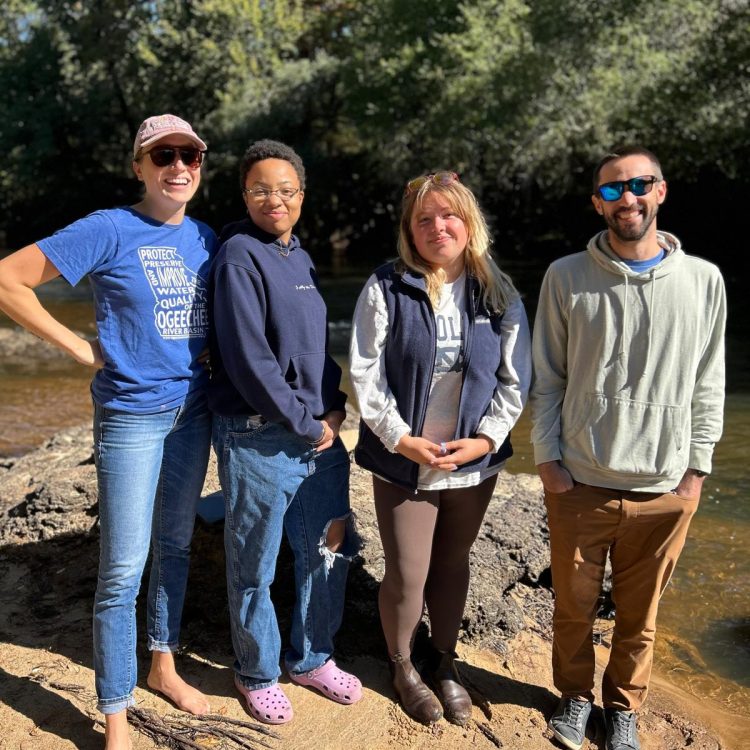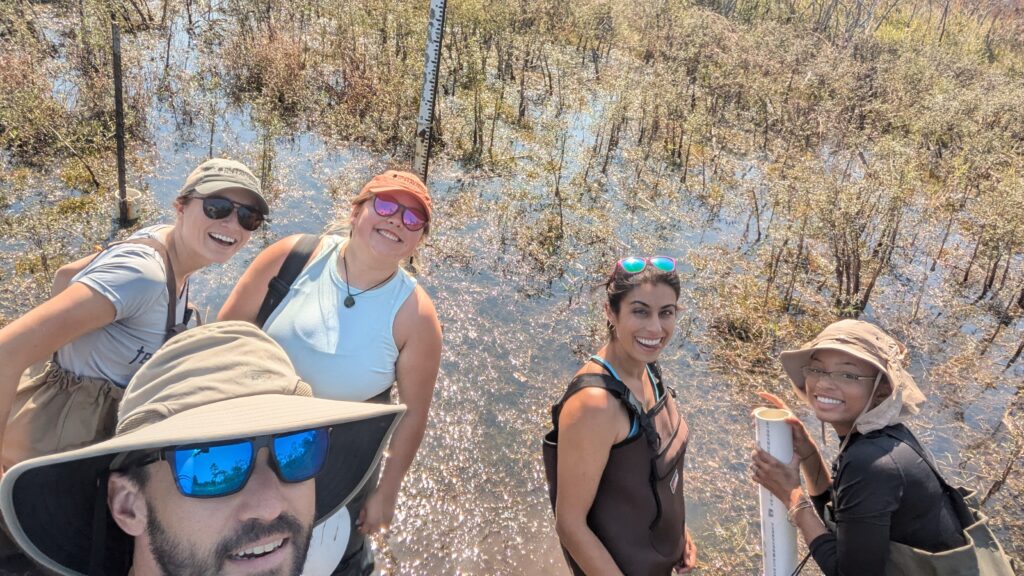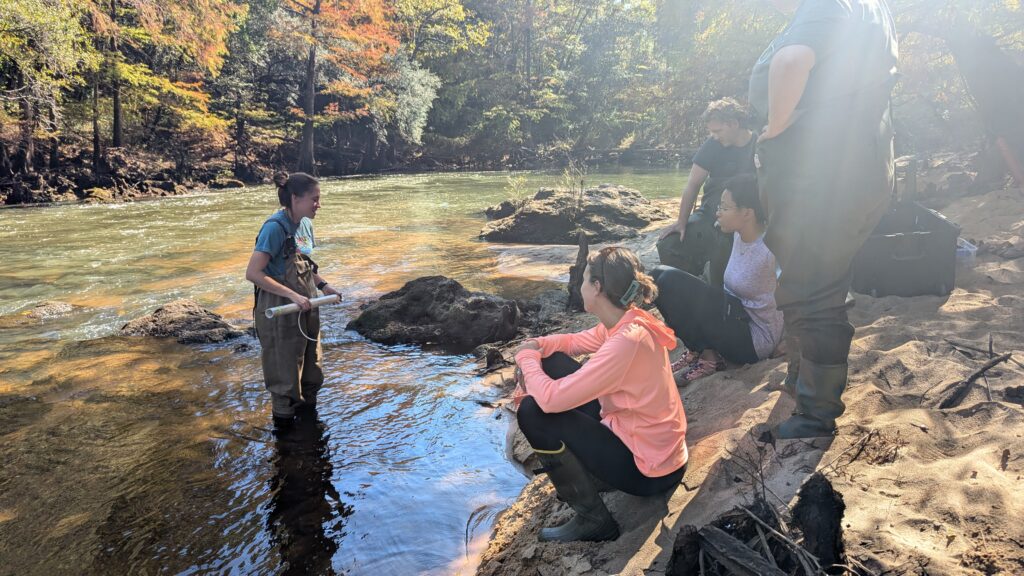The Aquatic Sciences Lab at the Jones Center is happily exhausted on this first proper cold day in SW GA! As we near the end of the lab’s first year, we have made lots of progress and collaborations to report on, many happening in the last few weeks.
We have our first exchange of personnel in the lab, as the NSF Woods2Water RaMP project moves into the next phase. Our RaMP lab member, Jewell Johnson, will head to Tuscaloosa to learn with collaborators at University of Alabama and NEON, while we work with her to analyze dissolved oxygen patterns in isolated wetlands. We’ll miss having you in person, Jewell! On the flip, Dustin Benton will join the lab from Tuscaloosa for the next few months! Dustin will avoid the heat and gnats of SW GA summertime and experience the winter and spring at Ichauway.
Nick also visited the College of Coastal Georgia to present a seminar, in collaboration with Dr. James Deemy and the Environmental Science program. James is an Ichauway alum and is involved with our wetlands program, helping understand the hydrology of intermittent wetlands with the Ecohydrology lab. We hope to build this connection and recruit students from CCGA to the Jones Center.
We are now on Instagram! Follow us at @jonescenter_aquaticsciences for field updates and news from the Lower Flint River basin

Methane Dynamics in Isolated Wetlands
Dr. Amanda DelVecchia joined us for a week in October to dig into the anaerobic side of our wetlands. We developed new techniques to quantify methanotrophy, or the use of methane gas by microbes as ‘food’, in the sediments of wetlands found at Ichauway. There are many follow-up questions to ask: what is the variability in different wetlands (marshes, swamps, floodplains)?; how do methane dynamics vary at different inundation conditions?; is there variability in different positions in a wetland? We hope that a new PhD student Amanda and I are recruiting will help shed light on these questions (more news on this coming very soon!)


Denitrification in Ichawaynochaway Creek
Abagael Pruitt and Ryan Meyer, both of the Tank Lab at Notre Dame, joined us for a week of creek work. Their lab has developed a method to estimate the microbial conversion of nitrate (NO3, a common driver of eutrophication) to N2 gas and we applied this method to compare rates of denitrification (NO3 -> N2) in our neck of the woods. We collected data hourly for 36 hours (night sampling!) and are in the process of analyzing all the data. We hope to report back with estimates of: aerobic metabolism, denitrification, N and P concentrations, gas exchange, and morphology of the Creek. Stay tuned, there may be results at SFS 2025!
Community Science across Urban and Rural Environments
We were thrilled to have Dr. Denzell Cross join for a short trip and seminar. Denzell is an Ichauway alum, working as a technician in 3 Jones Center labs from 2015 – 2017. He then completed a Ph.D. with Dr. Krista Capps at the Odum School at UGA, studying macroinvertebrate communities in urban streams around Atlanta. Currently, Denzell is a postdoc at Georgia St. University, working with the C-SAW project and integrating community science programs across the city, with a focus on environmental justice and equity. His story and focus were fascinating to consider the similarities and differences to rural Baker County, and got the lab thinking about how to broaden our labs approach to the communities that surround our patch of woods. How does the history of the area inform our environmental context and how do we address difficulties in that history in just and equitable ways? These are complicated projects but we aim to expand our abilities as scientists and communicators to begin the conversation. We look forward to catching up with Denzell at the Georgia Water Resources Conference in March!


Side Scan Sonar in the Flint River
Finally, we were joined by Dr. Adam Kaesar and Jake Roush from the US Fish and Wildlife Service office in Panama City, FL to instruct and collaborate with our lab and the Mussel Conservation Lab on how to use Side Scan Sonar (SSS). SSS uses principles of sonar and photogrammetry to record habitat and machine learning models to identify habitat of a river bottom and does so with low-cost technology and open-source technology. After learning the method on the river and on the computer, we hope to use this technology in partnership with LiDAR and ADCP tools, used by both the Mussel Conservation and Landscape Ecology Labs, to characterize habitats in the Lower Flint River basin and document changes in river habitat over time. Adam and Jake additionally have interest in the fish and mussel assemblage of the Flint River and this trip helped revitalize the collaboration with USFWS, with plans for a follow-up visit next summer!
